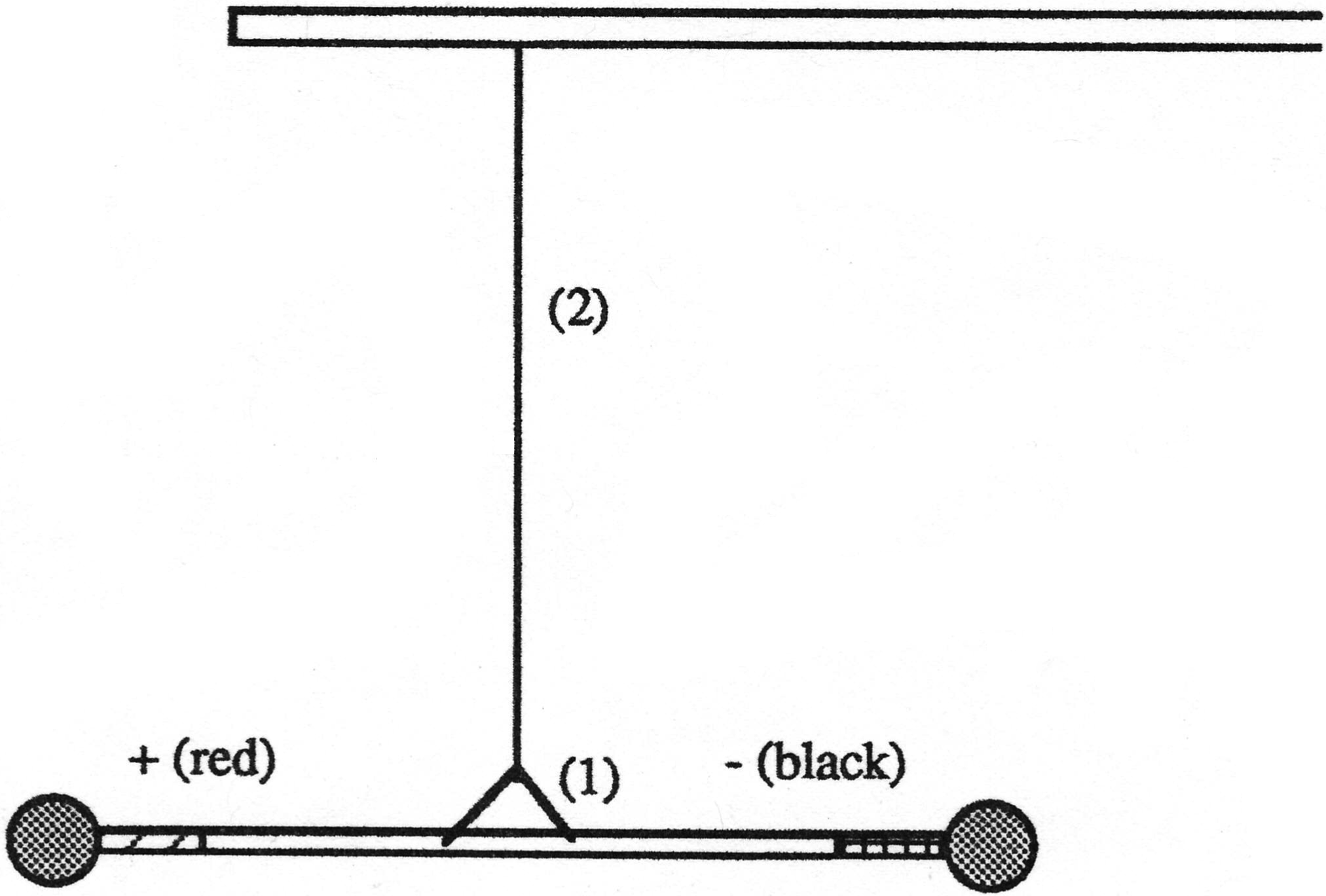Electrostatics with Ping Pong Balls
May 01, 1989 Filed in:
Demo CornerGyula Lorincz, University of Toronto
Introduction
Many of our old favourite electrostatics demonstrations can be improved using ping pong balls painted with graphite to replace pith balls. In particular, a simple but very sensitive electrostatic torsion balance can be used to demonstrate both the attraction of opposite charges and the repulsion of like charges.
Construction
Glue a ping pong ball to each end of a plastic drinking straw with model cement. The balls are then painted with graphite. Make two holes through the straw about 5 cm apart, one on each side of the center. Then thread a short length of string (1) through the holes, tying it at each end. A second length of string (2) can then be tied to this string in such a way that it can be slid back and forth to balance the suspended straw. One end of the straw should be coloured red and the other black in order make it easier to remember the polarity of the charge on each ball.
The only part that is not readily available is the graphite. I used a graphite solution called CARBON-X manufactured by GC Electronics, which is intended to be used to repair potentiometers. Colloidal graphite aqueous suspension (cat # 31338-01, $10.49) is also available from:
CENCO (Central Scientific),
1830 Mattawa Avenue,
Mississauga Ont. L4X 1K1
 Operation
Operation
Both charging by contact and by induction can be demonstrated. Rub a glass rod with silk, and charge the red ball positive by contact. Similarly the black ball can be charged negative using a plastic or rubber rod and some wool (I use part of an old scarf). The repulsion between the glass rod and the red ball, and the attraction between the glass rod and the black ball are easily shown. When a ball is charged by induction, it is first grounded by holding it; the charged rod is brought next to it; and the ball is released. The ball now has a charge of opposite sign to the rod, as can easily be seen from the attractive force between them.
Column Editor: Ernie McFarland, Physics Department, University of Guelph, Guelph, Ontario, N1G 2W1 Tags: Electricity


